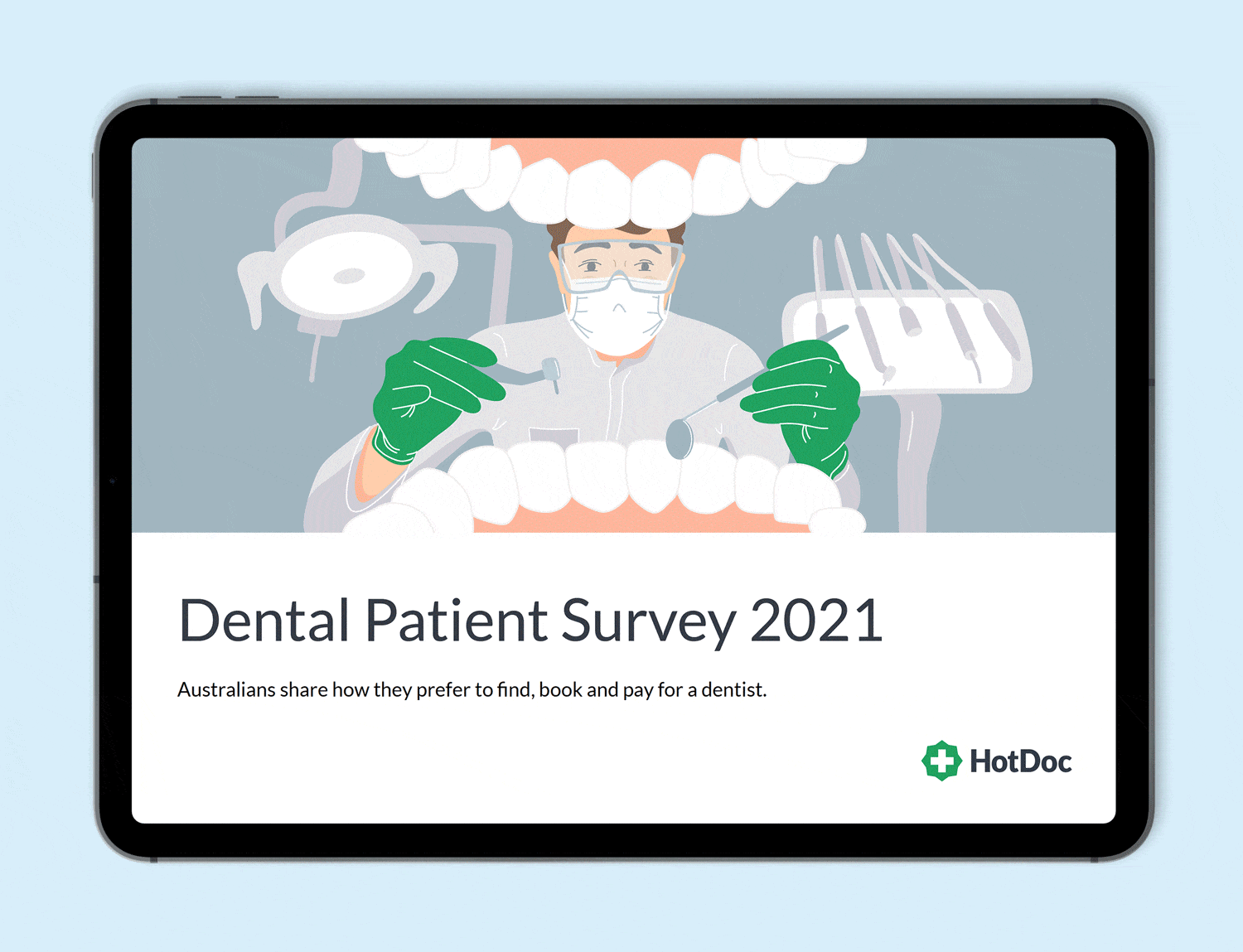Dentist-Entrepreneur, Dr Nauv Kashyap's Tips

Today, dental practices are operating in a more competitive environment than ever before. We sat down with dentist-entrepreneur Dr Nauv Kashyap, who has owned 17 dental practices in Australia, to get his perspective on attracting new patients—and keeping them—while staying ahead of the competition.
Before the appointment
1. Embrace online bookings and e-forms
With online bookings fast becoming the norm across multiple industries, an increasing number of dentists are making sure they can meet this new standard. “I hesitated with online bookings at first, but it’s clear that booking online has no impact on whether patients attend their appointment—the risk of a ‘no show’ is exactly the same,” Dr Kashyap says. “From the patient perspective, it’s far more convenient for people working nine to five. It can be very difficult to find that 10 minutes to talk to a dental receptionist in between meetings.”
Using e-forms to collect a patient’s information before they attend their appointment is another small but important way to improve the overall experience. “Having that information already taken care of means patients don’t have to turn up early to fill in a form,” Dr Kashyap says. “It also means dental assistants don’t have to spend their time entering information manually, which gives them time to greet and talk to patients.”
Grow and modernise your dental practice with HotDoc
2. Attract new patients with before and after photos
“There’s far more information available on dental practice websites today than ever before, especially for more advanced treatments like dental implants and cosmetic makeovers,” Dr Kashyap says. “Being able to see the before and after comparison makes a big difference in attracting those cosmetic patients. For example, a 60-year-old woman with a broken front tooth who wants a new smile can see exactly what the result would look like, and relate to the experience.”
In the waiting room
3. Calm patient nerves with interior design choices
Anyone who works at a dental practice knows that the moment a patient steps into the waiting room, nerves are likely to kick in. “Having a waiting room with a peaceful colour scheme and comfortable decor can go a long way towards calming patients,” Dr Kashyap says.
“A lot of people say even the smell of a dental practice can raise their anxiety levels, so something as simple as making sure the room doesn’t have that strong, recognisable smell can also make a significant difference in keeping patients calm and happy while they wait,” he adds.
4. Check in after the appointment
The few minutes after a procedure is another important moment in improving a patient’s experience, and it’s here that your reception staff have a vital role to play. “A patient is far more likely to share how their appointment went with someone they consider a layperson,” Dr Kashyap explains. “If they’ve had a particularly positive experience, your reception staff might even suggest the patient write up a Google review for the practice. Either way, asking about the patient’s experience helps them feel cared for as they leave.”
In the consultation room
5. Use photography to gain trust
A newer trend in dentistry is to use digital photography to show patients exactly what needs to be done during their appointment, and to show the results. “New patients come in with a certain level of doubt, so an easy way to gain trust is to show them exactly what you’re seeing,” Dr Kashyap explains.
“For example, if a patient has a cavity that’s not causing them any pain, a photo will help show them how important that $300 procedure is,” he says. “If they can’t see the work that needs to be done, there’s a chance they’ll delay treatment, and end up having to pay for a more complicated procedure later.”
6. Communicate efficiently, but don’t over-explain
While outlining the importance of each procedure is essential, Dr Kashyap warns against overwhelming patients with unnecessary detail. “I’ve worked with dentists whose appointments regularly ran over time because they spent too long explaining their procedures,” he says. “While patients want to understand what’s involved to some extent, a patient’s time is extremely important to them. If they have 45 minutes set aside for an appointment, we need to do everything we can to stick to that timeframe or we risk losing them to a more efficient practice.”

FREE: Dental Patient Survey 2021
Discover how Australians prefer to find, book and pay for a dentist, so you can deliver the experience your patients expect and deserve.
After the appointment
7. Make time for post-procedure phone calls
A simple follow-up call after an in-depth procedure is one of the most powerful tools a dentist has at their disposal. “The post-op call is so well received by patients because they can see that their dentist actually cares,” Dr Kashyap says. “All of a sudden the patient is hearing from a professional who’s taken time out of their day to check in with them and make sure they’re okay. I didn’t realise how powerful this action was until we started seeing positive reviews mentioning how much it improved people’s experience.”
8. Show the friendlier side of the practice
Dr Kashyap advises against the use of email newsletters in practice promotion, pointing to tools like Facebook and Instagram as more effective ways to connect with and build community.
“The click-through rates on email newsletters aren’t particularly high for dental practices, but posting to a platform like Facebook three or four times per week does work to keep patients engaged,” he says. “We post things like fun facts, jokes—even snapping a picture of a team member’s birthday cake and sharing it. These small digital interactions help make the practice a more welcoming place when the time comes for an appointment.”
9. Take care of that next appointment
“From a patient’s perspective, automatic reminders for their next appointment make a big difference to their overall experience with a practice,” Dr Kashyap says. “Often, health funds will cover a check and clean every six months, so patients really appreciate the reminder to make the most of their benefit. From the practice’s perspective, setting up an automatic SMS reminder system is a must. This saves making 30, 50 or even 100 phone calls, or letters getting lost in the mail.”
“With competition the way it is now, making small but important changes like these is vital to the sustainability of a dental practice,” Dr Kashyap adds. “Our industry is going through big changes, and it’s those practices that stay informed and adapt that will be able to keep existing patients and bring in new ones.”

Dr Nauv Kashyap
Dentist & Managing Director, Practice Ownership Consulting
Dr Nauv Kashyap is an Australian dentist and entrepreneur who coaches dentists on all aspects of dental practice ownership. Dr Kashyap purchased his first dental practice in 2008 and over a decade he took the annual turnover from $400K to $5M. He has since owned a further 16 dental practices, some of which he has sold.



